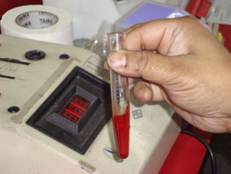Training and Projects
Training and Research Services
Under-Graduate and Post-graduate students of Science and Technology can avail contract project and research training programs in the field of Biotechnology, Molecular Biology, Microbiology, Physiology, Biochemistry, Bioinformatics, Cell Biology, Reproductive Biology, Immunology, and Toxicology.
AT A GLANCE
R&D Fields:
BIOTECHNOLOGY:
- Fermentation Technology and its application in Beverage and Food Processing Industry.
- Plant and Animal Tissue Culture Techniques.
- Nano-Biotechnology.
MOLECULAR PHYSIOLOGY:
- Molecular Reproductive Biomedicine.
- Reproductive Toxicology.
- Germ Cell Apoptosis (Programmed Cell Death)
- Molecular Endocrinology.
- Histology and Immuno-histochemistry.
- Biochemistry and Cell Signalling.
MICROBIAL GENETICS AND MOLECULAR BIOLOGY:
- Isolation of Genomic DNA from Bacteria, Yeast, Fungus, Eukaryotic Tissue, Blood.
- Isolation of Plant DNA using CTAB extraction method.
- Isolation of chloroplast DNA.
- Isolation and Purification of Plasmid DNA (Miniprep and alkaline lysis methods.
- Mitochondrial DNA isolation.
- Isolation of Total RNA from Bacterial cells, Plant tissues and Animal tissues.
- Spectrophotometric Determination of Nucleic Acid Purity and Concentration.
- Quantification of DNA by Burton’s Diphenylamine Technique.
- Quantification of RNA by Disch’s Orcinol Technique for RNA.
- Restriction Enzyme Digestion and ligation of DNA.
- Agarose Gel Electrophoresis of DNA and RNA.
- Elution of DNA fragments from Agarose.
- Preparation of Competent bacterial cells.
- Transformation methods of Competent E.coli cells.
- SDS-Polyacrylamide Gel Electrophoresis (PAGE).
- Western Blotting (Immunoblotting) Techniques.
MICROBIOLOGY AND IMMUNOLOGY
- Antibiotic Concentration in Media.
- E.coli growth curve by spectrophotometer.
- Bacterial population count by turbidimetry determination method.
- Effect of temperature on bacterial growth.
- Determination of thermal death point (TDP) and death time (TDT) of microrganism.
- Effect of pH on bacterial growth.
- Effect of osmotic pressure on bacterial growth (UV survival curve).
- Effect of heavy metals on bacterial.
- Storage of Bacterial Strains in Stab Agar and Glycerol solution.
- Preparation of culture media.
- Preparation of liquid medium (broth).
- Preparation of solid medium (PDA medium and PDA plates.
- Demonstration of techniques for pure culture of microorganisms (streak, pour, spread –plate methods, serial dilution agar plate method.
- Sampling of bacteria from air, water and soil.
- Bacterial cell counting using hemocytometer, and colony counter.
- Methods of staining of microorganisms.
- Cultivation and isolation of aerobic and anaerobic bacteria.
- Measurement of fungal growth by colony diameter method and biomass (mycelia dry method).
- Determination of sugar (glucose, sucrose and lactose) fermentation.
- IMViC test of enteric bacteria.
- Catalase activity for H2O2 production.
- Oxidase activity of a given bacterial sample.
- Demonstration of carbohydrate metabolism (i.e. oxidation and fermentation of glucose) by Hugh-Leifson’s test.
- Demonstration of starch hydrolysis by a given bacterial culture.
- Demonstration of protein (gelatin) hydrolysis.
- Fat hydrolysis (lipase activity) by a bacterial culture.
- Phenylalanine deaminase production.
- Demonstration of lysine decarboxylase activity of bacteria.
- Effect of substrate concentration on enzyme activity.
- Effect of temperature on enzyme activity.
- Estimation of Protein by Bradford’s and Lowry’s method.
- Synthesis of inducible enzyme β-galactosidase in E.coli.
- Demonstration of streaking plates using toothpick.
- Genetic recombination (conjugation) in bacteria.
- Enumeration of bacteria in milk and presumptive test for coliforms.
- Enzymatic test of milk by methylene blue reductase test method.
- Microbiological analysis of food products.
- Detection of bacteria in spoiled tinned food.
- Demonstration of microbial production of curd.
- Presumptive test for coliforms in butter.
- Analysis of mycotoxin in fungal-contaminated food materials.
- Detection of calcium and phosphorus in milk.
- Isolation of microflora from human skin, throat, and dental caries.
- Urine culture and its microbiological analysis.
- Demonstration of agglutination reaction by means of known antigen and antibody.
- Demonstration of agglutination reaction by unknown bacterial culture by slide agglutination technique.
- Agglutination reaction with reference to blood grouping
- Blood examination for Rh factor.
BIOINFORMATICS
- Comparative Genomics and Proteomics.
- Bioinformatics Tools Development.
- Data Management of Biological and Biotechnology Information
- Molecular Modeling.
- Molecular Mechanics and Molecular Dynamics Simulation.
- Molecular Docking Studies.
- Sequence Comparison Methods
- Gene finding
- Protein Structure Prediction.
- Protein-Protein Interaction.
- Processing of DNA Microarray Data.
- Data Mining Methods of Gene Expression.
- Drug Design and Computer-Assisted Drug Discovery.
- Modeling of Drug-Receptor Interaction.
- Chemoinformatics.
- Quantitative Structure Activity Relationship (QSAR)/(-2D, 3-D, 4-D QSAR Technology).
- Perl Programming in Bioinformatics.
- C/ C++ Programming in Bioinformatics.
- JAVA programming in Bioinformatics.
- BIOPYTHON
Education:
- Academy-Industry Joint Venture Programs.
- Projects and Industrial Training on Biotechnology and Bioinformatics.



